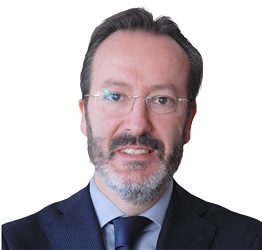Industry Insight: Jaime Lobera, Campofrio
Gama spoke to Jaime Lobera, Chief Marketing and Sales Officer, Campofrio.
What are your day to day activities?
In addition to all the strategic work that we carry out in the central offices, together with our in-country teams, I have to ensure the implementation of our business plan in both areas, including the various countries in which we operate. This involves close monitoring of daily sales and the results of our advertising campaigns and promotions, support for our new products and the activation of all our key programs in relation to our main clients. The operating model of our company implies that senior managers are not only in charge of defining the strategy of the group but also fully involved in the execution of our plans, as our key goal is to be the choice shoppers make every time they are in front of the shelves – each time, those millions of times.
What key trends do you expect to shape food and drink innovation in 2014?
Health concerns will continue to be the number one trend in these markets as consumers are more and more conscious about the importance of living more and living better, enjoying the good things in life. We are what we eat, and people in Western Europe are aware of it and act accordingly. For example, more people than ever in Spain now practise running, which shows the importance of having a balanced lifestyle that combines physical exercise with a healthy diet. Saving time or dedicating time to those tasks most relevant to consumers will also continue to be key, and for this reason convenience is going to be a must for everyone in the industry.
What should manufacturers do to be successful in the current economic climate?
We all need to put ourselves in the consumer's shoes. Even if you manage a premium brand, you need to make sure that it is accessible to your target market within the new environment, maybe by playing with smaller formats or new presentations. Many companies have now realized after many years of crisis that they can no longer ignore the situation consumers are in, and need to gear their offerings to shoppers' reduced budgets: it is interesting to see how big companies such as Danone and Nestle, for example, are launching products positioned at very accessible price points.
Which markets (countries) or consumer groups currently offer the greatest growth opportunities for FMCG companies?
We still detect growth opportunities in Europe, both in what we could call mature countries and also in mature categories. In several of our categories we are achieving growth rates from +15% to +25% no matter what the country is. In the end it always depends on satisfying consumer needs better than before. One good example is the target of senior people, that is becoming more and more important all around Europe.
How do companies best achieve growth in developed or saturated markets?
Focusing on the core and listening more to their consumers. Consumers need to be constantly surprised by us. We must avoid letting our categories be boring or stagnated. Consumers will always be willing to try the novelties that we present to them if they respond to their real needs. As consumers never stop, neither should we. We are living in times of many changes, and people are tryying more new things than ever in their personal life. In this sense we now have more opportunities , but maybe we need to challenge more the status quo . In developed markets sometimes it is good to look back to the origin of the category and the primary needs it satisfied because these benefits might have been abandoned.
From a marketing perspective, how is the way companies are looking to reach and engage with consumers changing? How can a brand successfully resonate with consumers?
We are now living in the golden age for marketeers. Reaching consumers now is easier and cheaper than ever thanks to digital media, social networks and mobile gadgets. Companies and brands now have the chance to speak to their targets in a personal and individual approach, one to one. And what people are expecting from them is an open and transparent dialogue. Also to see our commitment and responsibility to behave in a way that helps to create a better world. So in my view, companies and brands need to forget a little bit about themselves and put the focus on citizens – their concerns, desires and dreams. And commit to making things work better. This is how some brands are really engaging with their consumers, who today are better informed and more demanding and have more decision power than ever.

